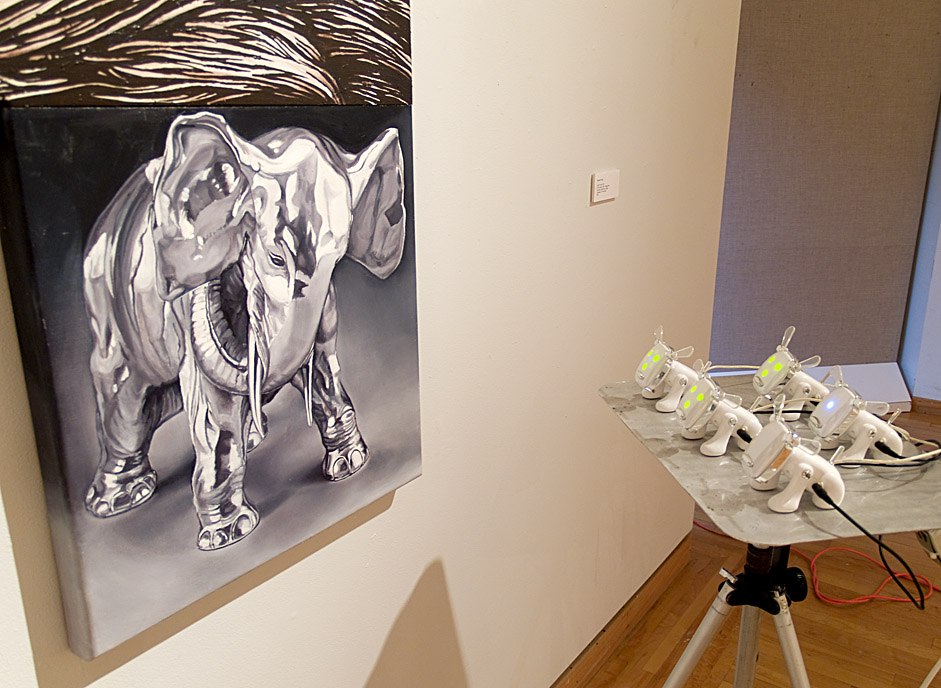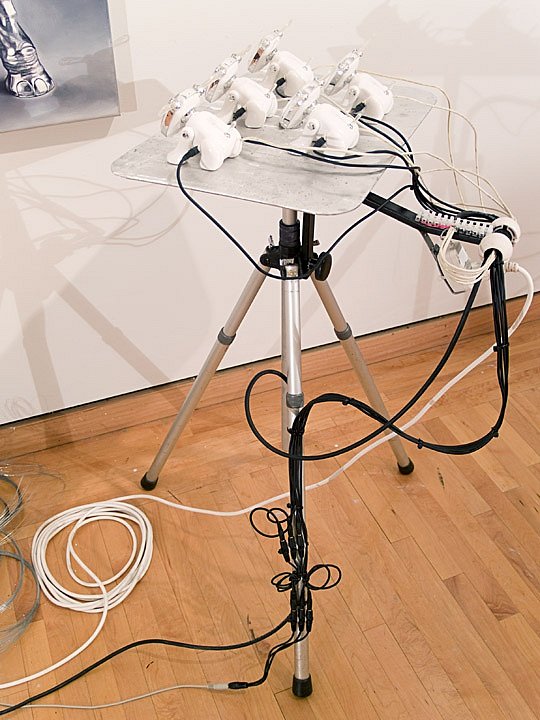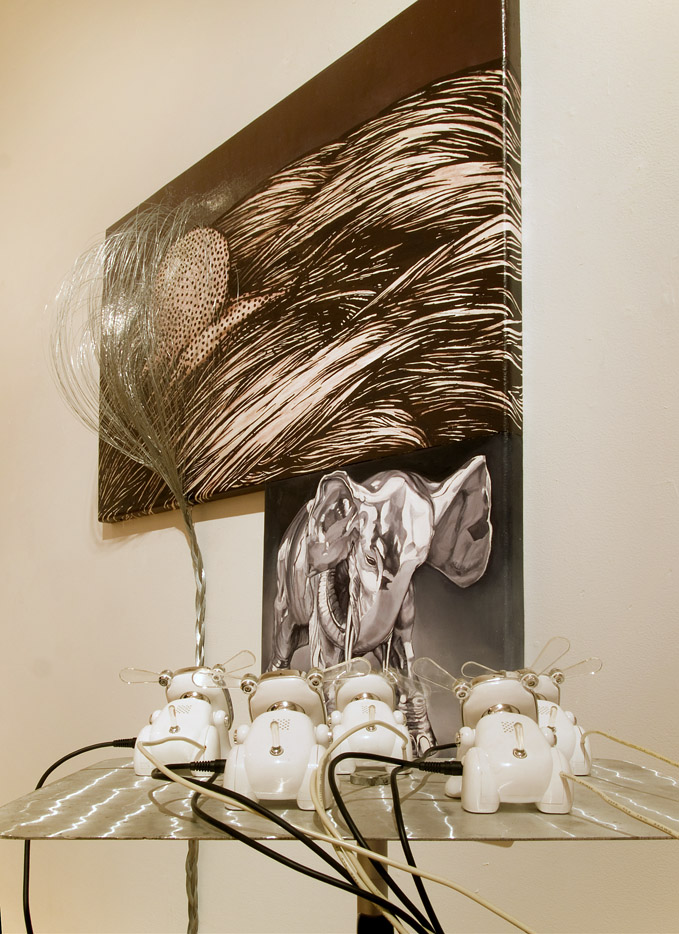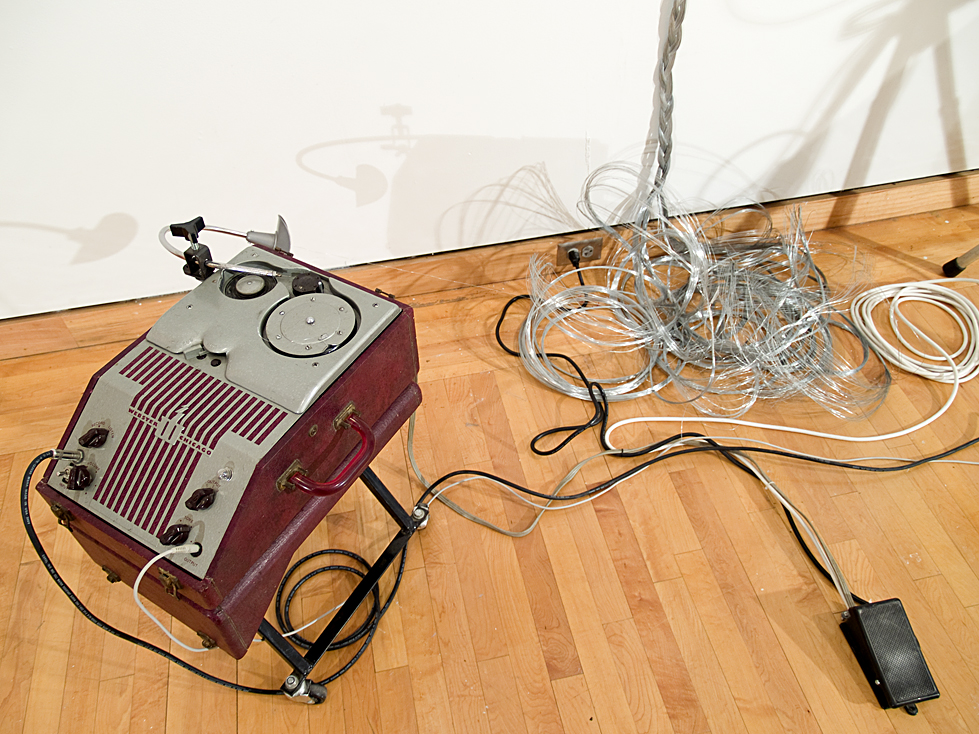
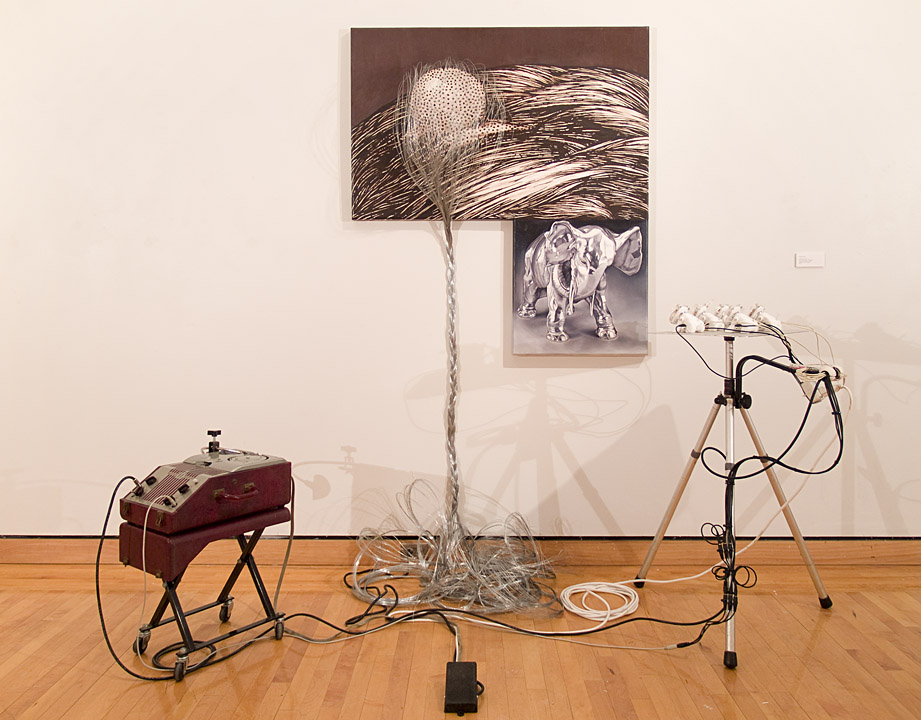
Combover Audio installation, 90x96x66”, oil on panel, wire recorder, a mile of stainless steel wire, electronics
Combover is named for a kind of practiced yet naive denial once commonly exhibited by the prematurely balding. In this piece I use this as a metaphor for the ways in which the weight of memory distorts perception, which in turn biases and alters memory. In Combover this feedback loop begins with a painting based upon a medical illustration of a scalp edema worn like an ill-fitting toupee by an image of a Tiffany elephant. When a viewer steps on the pedal a 1930s Webster wire recorder plays the stainless steel “hairs” that emerge from the painted boil. A version of the “Blind Men and the Elephant” parable is played through five idogs that perform a garbled version of the story for the Tiffany elephant, thereby completing the loop.
In the original Taoist parable the elephant symbolizes reality. Each of the blind men touches only a part of the elephant and therefore misinterprets his perceptions. One touches the leg and thinks it a tree, another handles the trunk and thinks it a snake. The tail is thought to be a brush and the tusk is visualized as a plow. In Combover the elephant not only represents this subjectiveness of reality but also assumes its popular role as a symbol for memory. The elephant is invoked in the guise of Tiffany figurine and circus soundtrack in order to emphasize the sense of spectacle,irony and pathos.
The soundtrack of this documentation video is the audio that is recorded on the steel wire and played back through the Webster recorder and the idogs.
